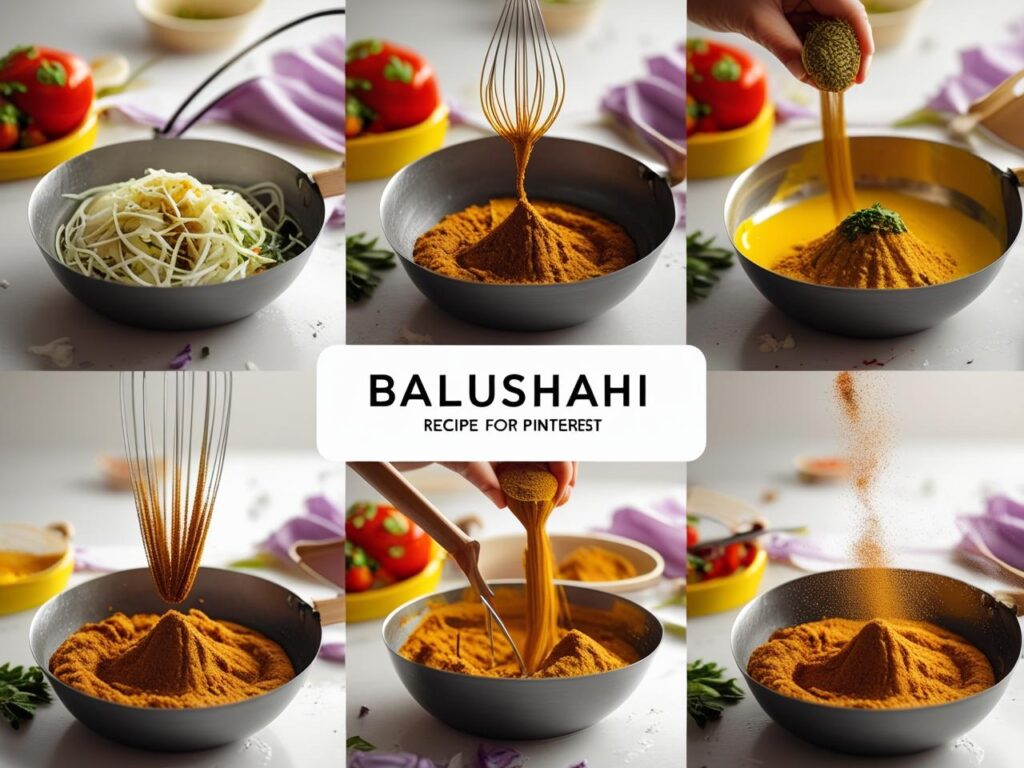If you’ve ever craved a rich, flaky Indian sweet that melts in your mouth with every bite, then you’ve probably heard of Balushahi. This traditional Indian dessert is a favorite at festivals, weddings, and celebrations—but making it at home can seem intimidating. Maybe you’ve struggled with recipes that turn out too oily or hard, or perhaps you’re just looking for a straightforward, foolproof way to enjoy this delicacy from your own kitchen.
In this guide, you’ll learn how to make an easy Balushahi recipe that’s both authentic and delicious. I’ll walk you through each step, share expert tips, and explain why this sweet treat is loved across India and beyond. Plus, you’ll find answers to all your common questions at the end.
What is Balushahi? A Traditional Indian Dessert Explained
Balushahi is a classic Indian sweet, often described as a flaky, sugar-coated doughnut with a rich texture. Unlike the soft and spongy gulab jamun, Balushahi is crisp on the outside and tender inside, soaked in a lightly flavored sugar syrup. This dessert has roots in Mughal cuisine and is popular in North India, especially during festivals like Diwali and Holi.
Benefits of Making Balushahi at Home
- Control over ingredients: Avoid preservatives and artificial flavors often found in store-bought sweets.
- Customizable sweetness: Adjust sugar levels to suit your taste.
- Freshness: Enjoy the dessert warm and fresh, which is often better than packaged options.
- Cultural connection: Making Balushahi connects you with Indian traditions and heritage.
Step-by-Step Easy Balushahi Recipe
Here’s a simple, detailed recipe that beginners and experienced cooks alike can follow.
Ingredients:
- 2 cups all-purpose flour (maida)
- ½ cup ghee (clarified butter), melted
- ¼ cup yogurt (curd)
- ½ tsp baking soda
- 1 cup sugar
- 1 cup water
- A pinch of cardamom powder
- Oil or ghee for deep frying
Instructions:
- Make the dough
In a bowl, mix the flour, baking soda, and melted ghee until crumbly. Add yogurt gradually and knead gently into a soft dough. Cover and rest for 30 minutes. - Prepare sugar syrup
Combine sugar and water in a pan. Heat until sugar dissolves completely. Add cardamom powder and simmer until it reaches one-string consistency. Keep warm. - Shape the Balushahi
Divide the dough into small balls (about the size of a walnut). Flatten slightly and make a small indentation in the center of each. - Fry the Balushahi
Heat oil or ghee on medium heat. Fry the dough pieces slowly until golden brown and crisp on all sides. Remove and drain on paper towels. - Soak in syrup
Immediately dip the fried Balushahi into the warm sugar syrup for 2-3 minutes, then remove and let them dry on a rack. - Serve
Enjoy fresh or store in an airtight container for up to a week.
Tips for Perfect Balushahi Every Time
- Low heat frying is key to ensure the Balushahi cooks through without burning.
- Use fresh ghee or good quality oil for authentic flavor.
- Don’t over-knead the dough; it should be soft but not sticky.
- Let the sugar syrup cool slightly before soaking to avoid sogginess.
- Store in an airtight container to maintain crispiness.

Balushahi vs Other Indian Sweets: A Quick Comparison Table
| Sweet Name | Texture | Main Ingredients | Popular Occasion | Sweetness Level |
|---|---|---|---|---|
| Balushahi | Flaky, crisp | Flour, ghee, sugar | Festivals, Weddings | Medium |
| Gulab Jamun | Soft, spongy | Milk solids, sugar | All Indian festivals | High |
| Jalebi | Crispy, syrupy | Flour, sugar syrup | Street food, festivals | Very Sweet |
| Ladoo | Grainy, soft | Flour, sugar, nuts | Religious ceremonies | Medium |
What Experts Say About Balushahi
Chef Anjali Mehta, a renowned Indian pastry chef, says:
“Balushahi is all about balance — getting the dough right, frying slowly, and soaking just enough in syrup. It’s a labor of love that rewards with an unforgettable taste.”
FAQs About Balushahi Recipe
Q1: How does Balushahi differ from Gulab Jamun?
A1: Balushahi is crisp and flaky, fried slowly in ghee, while Gulab Jamun is soft, spongy, and soaked in syrup. They also use different dough bases.
Q2: Can I make Balushahi gluten-free?
A2: Traditional Balushahi uses all-purpose flour, but you can try gluten-free flours like rice flour with some experimentation.
Q3: How long does Balushahi stay fresh?
A3: When stored in an airtight container at room temperature, Balushahi stays fresh for up to 7 days.
Q4: Is Balushahi healthy?
A4: It’s a sweet treat, so best enjoyed in moderation. Homemade versions let you control sugar and oil quality.
Q5: Can I use baking powder instead of baking soda?
A5: Baking soda is preferred for the texture, but baking powder can be a substitute if adjusted carefully.
Conclusion
Now that you have a foolproof, easy Balushahi recipe, why not try making this traditional Indian dessert at home? It’s a wonderful way to connect with your roots or introduce your family to new flavors. If you have any questions or tips, drop a comment below — I’d love to hear from you!
If you want, I can also help create Pinterest SEO-optimized descriptions, tags, and more to get your recipe noticed




Leave a Reply